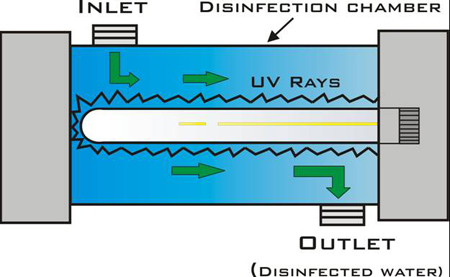Disinfection System:
Water disinfection means the removal, deactivation or killing of pathogenic microorganisms. Microorganisms are destroyed or deactivated, resulting in termination of growth and reproduction. When microorganisms are not removed from drinking water, drinking water usage will cause people to fall ill.
Sterilization is a process related to disinfection. However, during the sterilization process all present microorganisms are killed, both harmful and harmless microorganisms.
Media:
Disinfection can be attained by means of physical or chemical disinfectants. The agents also remove organic contaminants from water, which serve as nutrients or shelters for microorganisms. Disinfectants should not only kill microorganisms. Disinfectants must also have a residual effect, which means that they remain active in the water after disinfection. A disinfectant should prevent pathogenic microorganisms from growing in the plumbing after disinfection, causing the water te be recontaminated.
For chemical disinfection of water the following disinfectants can be used:
- Chlorine (Cl2)
- Chlorine dioxide (ClO2)
- Hypo chlorite (OCl–)
- Ozone (O3)
- Halogens: bromine (Br2), iodene (I)
- Bromine chloride (BrCl)
- Metals: copper (Cu2+), silver (Ag+)
- Kaliumper manganate (KMnO4)
- Fenols
- Alcohols
- Soaps and detergents
- Kwartair ammonium salts
- Hydrogen peroxide
- Several acids and bases
For physical disinfection of water the following disinfectants can be used:
- Ultraviolet light (UV)
- Heat
